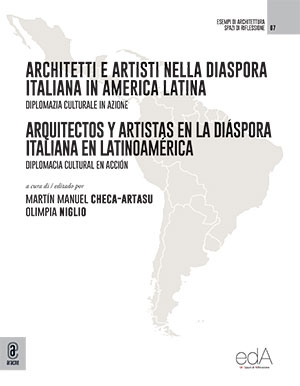DOI: 10.53136/97912599439038
Pages: 172-203
Publication date: September 2021
Publisher: Aracne
SSD:
ICAR/18
Francisco D’Amico (1878-1964) was an Italian architect who left a mark on the West side of the Atlantic. He arrived in Mexico at the beginning of the 20th century, presumably within –or attracted by- the Adamo Boari’s team; to whom the Porfirio Díaz regime commissioned emblematic projects in the Mexican capital and strategic places of the country. Later, while the Mexican Revolution took place, D’Amico went to the northern of Mexico and undertook projects under the command of the revolutionary general Juan N. Medina; he also met the Commander of the División del Norte, Francisco Villa, and the chief of the Constitutionalist army, Venustiano Carranza. D’Amico’s subsequent wanderings led him to Guatemala, where he started a family and continued his life until he was called back to Mexico. It was then that his destiny abruptly changed course, since the Abruzzese arrived by accident to the state of Chiapas, which was in full post-revolutionary convulsion with the state government of Efraín Gutiérrez (ally of Mexican President General Lázaro Cárdenas, 1936-1940). Without knowing it at that time, D’Amico was about to help build the capital of that southern Mexican stateuntil the end of his days, specially under the state government of Rafael Pascacio Gamboa (1941-1944). This contribution seeks to integrate D’Amico’s professional trajectory into the political-social contexts that occurred both in Mexico and Guatemala during the first half of the 20th century. In between these two countries, we will present Chiapas and more specifically its current capital (since 1892), Tuxtla Gutiérrez. Such was D’Amico’s unexpected destiny where he ended his life and to which he offered a first urban transformation.
Keywords: Chiapas, Arquitectura posrevolucionaria, Francesco D’Amico, Tuxtla Gutiérrez.


